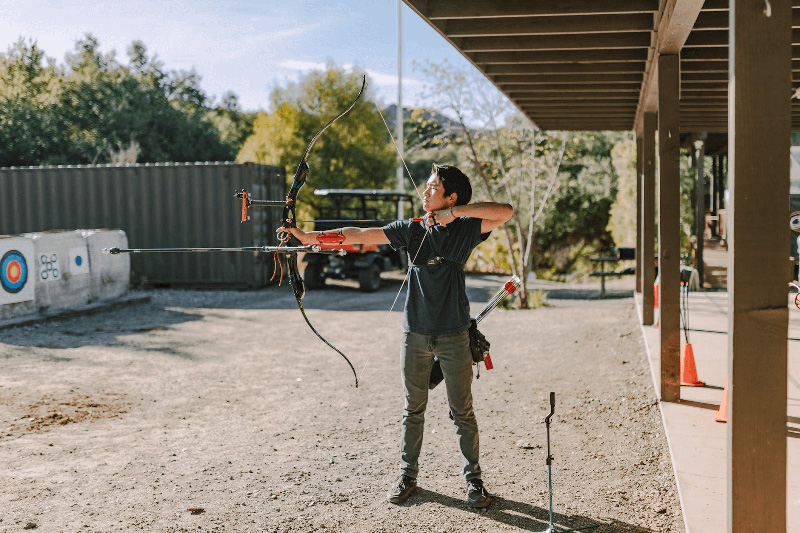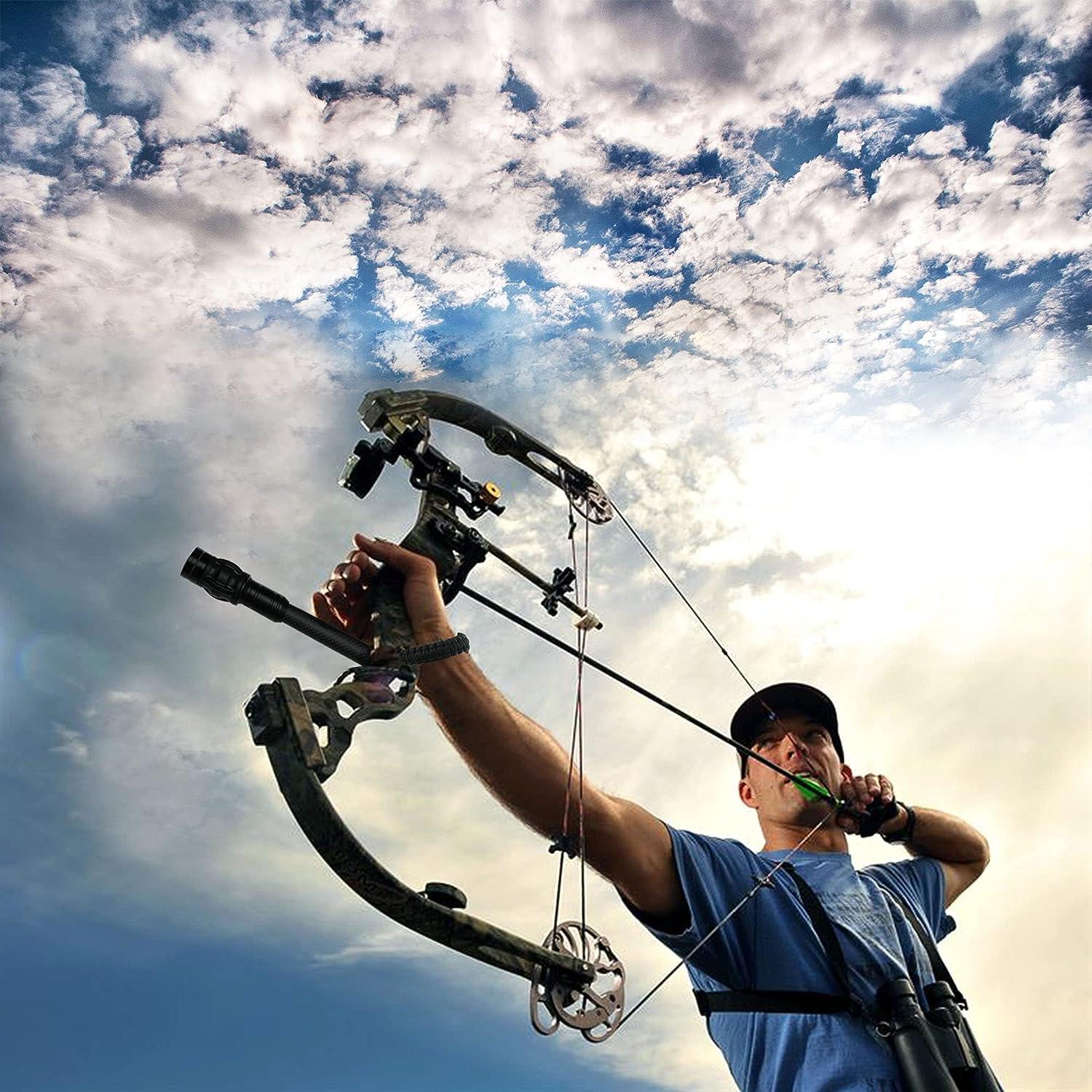The Ultimate Overview to Selecting the Right Archery Stabilizer for Improved Precision
Amongst the numerous devices readily available, an archery stabilizer plays a substantial duty in boosting precision. In this detailed overview, we will check out the essential elements to consider when selecting an archery stabilizer for boosted accuracy. Whether you are a skilled archer looking to update your equipment or a novice seeking support, join us on this trip as we decipher the tricks to picking the perfect archery stabilizer.
Length: Locating the Optimal Stabilizer Length
Identifying the suitable stabilizer length is critical when choosing an archery stabilizer for optimum performance. A stabilizer that is as well long can make the bow feel top-heavy and challenging to manage, while a stabilizer that is also short might not provide enough stability and dampening of resonances.
A longer stabilizer, typically varying from 8 to 12 inches, can provide higher security and decrease bow torque. This is particularly advantageous for archers that shoot with a high draw weight or those who have a propensity to torque the bow during the shot. The added size assists to disperse the weight evenly and counterbalance any torque or movement.
On the various other hand, a shorter stabilizer, generally between 4 to 7 inches, provides extra ability to move and quicker reaction. It is favored by archers who shoot with a reduced draw weight or those that call for more wheelchair, such as seekers or 3D shooters. The much shorter size enables much easier activity via tight spaces and faster modifications.
Inevitably, the optimum stabilizer size refers personal choice and shooting design. It is suggested to experiment with various lengths and observe the impacts on security and accuracy. Consulting with experienced archers or professionals can also offer useful understandings and recommendations.
Weight: Figuring Out the Appropriate Stabilizer Weight
After considering the optimal stabilizer length, the following important variable to think about when choosing an archery stabilizer is figuring out the suitable stabilizer weight - archery stabilizer. The weight of the stabilizer plays a critical role in enhancing precision and security during the shot
The weight of the stabilizer affects the balance and control of the bow. A larger stabilizer can give raised security and control, specifically for shooters with a propensity for irregular shots or unstable hands. It assists to soak up the resonances and recoil generated by the bow, reducing torque and decreasing the impact on the arrow's flight.
On the various other hand, a lighter stabilizer permits a quicker and much more receptive bow. It can be helpful for shooters who prioritize ability to move and speed over stability. Lighter stabilizers additionally minimize fatigue throughout long shooting sessions or competitions.
To establish the ideal stabilizer weight for your requirements, it is necessary to consider your capturing design, physical strength, and bow arrangement. Trying out with different weights and observing the influence on your capturing performance is vital to finding the excellent equilibrium.
Ultimately, the optimum stabilizer weight will differ for every specific archer. It is suggested to begin with a modest weight and make adjustments based upon individual preference and capturing results. Bear in mind, the goal is to attain a controlled and steady shot, while also preserving convenience and ease of usage.
Materials: Choosing the Right Materials for Longevity and Efficiency
When selecting an archery stabilizer, it is essential to thoroughly take into consideration the products made use of in its building to make sure resilience and enhance performance. The choice of materials can substantially impact the overall high quality and effectiveness of the stabilizer.
Among one of the most typically utilized products for stabilizers is carbon fiber. Carbon fiber supplies a high strength-to-weight ratio, making it lightweight yet unbelievably strong. This material takes in vibrations and minimizes bow torque, causing boosted stability and accuracy. Additionally, carbon fiber stabilizers are resistant to temperature modifications and are much less most likely to warp or bend over time.
An additional preferred product for stabilizers is light weight aluminum. Aluminum stabilizers are known for their sturdiness and rigidity. They supply exceptional wetting capabilities, decreasing the amount of shock and vibration transferred to the shooter's hand. Light weight aluminum stabilizers additionally use a variety of modification options, allowing archers to readjust the weight and size to fit their choices.
Some stabilizers are built utilizing a mix of products. A stabilizer may have a carbon fiber core wrapped in an aluminum shell. This crossbreed layout integrates the very best qualities of both products, supplying optimum security, longevity, and efficiency.
Design: Recognizing the Different Stabilizer Styles and Their Results
Considering the materials made use of in archery stabilizers, it is essential to now look into the various styles of stabilizers and their respective impacts. The design of an archery stabilizer plays my latest blog post an important duty in enhancing accuracy and decreasing vibration throughout the shot. There are several different layouts available in the market, each with its very own unique attributes.

One more prominent design is the side bar stabilizer. This layout includes attaching a brief pole to the side of the bow, parallel to the major lengthy rod. Side bar stabilizers aid in reversing the weight of accessories, try this website such as views or quivers, and offer extra security to the bow.
Some stabilizers include flexible weights. These stabilizers enable archers to tweak the equilibrium and feel of their bows by including or eliminating weights. This function is specifically beneficial for archers that choose a specific weight distribution or intend to experiment with different setups.
Additionally, some stabilizers include wetting technology to reduce resonance and sound. These stabilizers commonly have integrated dampeners or use products that soak up vibrations, causing a smoother and quieter shot.

Accessories: Exploring Extra Accessories for Boosted Stability
To even more enhance security in archery, extra devices can be used. These accessories are designed to operate in conjunction with the archery stabilizer to provide an even higher level of stability and accuracy. One such accessory is the V-bar or the side stabilizer install. This accessory enables the add-on of a 2nd stabilizer, which aids to reduce and balance the bow torque. By distributing the weight evenly on both sides of the bow, the V-bar aids to decrease any undesirable activity throughout the shot.
Another accessory that can boost security is a bow sling. A bow sling is a band that connects to the bow and enables the archer to keep a relaxed grip on the bow handle without the fear of dropping it (archery stabilizer). This relaxed grasp aids to minimize muscle mass tension and permits a more constant and stable shot
Additionally, a stabilizer weight navigate here system can be used to fine-tune the balance and stability of the bow. These weight systems generally contain tiny weights that can be included or removed from the stabilizer to readjust the equilibrium point of the bow. By locating the ideal balance factor, archers can accomplish a much more stable and exact shot.
Verdict
To conclude, selecting the ideal archery stabilizer entails taking into consideration aspects such as length, weight, products, design, and added accessories. The optimum stabilizer length and weight will certainly depend upon individual choices and shooting style. Selecting sturdy products is necessary for long-lasting performance. Understanding the different stabilizer designs will certainly help improve precision. Last but not least, exploring added accessories can further boost stability during archery capturing.
Figuring out the ideal stabilizer length is critical when picking an archery stabilizer for optimal performance. A stabilizer that is also long can make the bow really feel challenging and top-heavy to regulate, while a stabilizer that is also brief may not supply adequate security and dampening of resonances - archery stabilizer.Taking into account the materials used in archery stabilizers, it is essential to now dive right into the various designs of stabilizers and their respective effects. Side bar stabilizers help in reversing the weight of devices, such as quivers or views, and provide additional stability to the bow
These weight systems normally are composed of tiny weights that can be included or gotten rid of from the stabilizer to adjust the equilibrium factor of the bow.
Comments on “Maximize Your Shot: Picking the Right Archery Stabilizer”